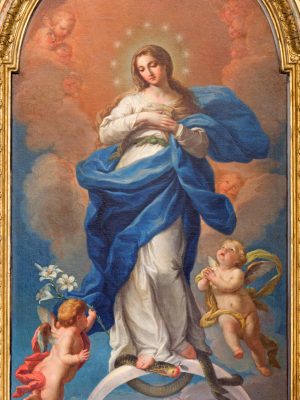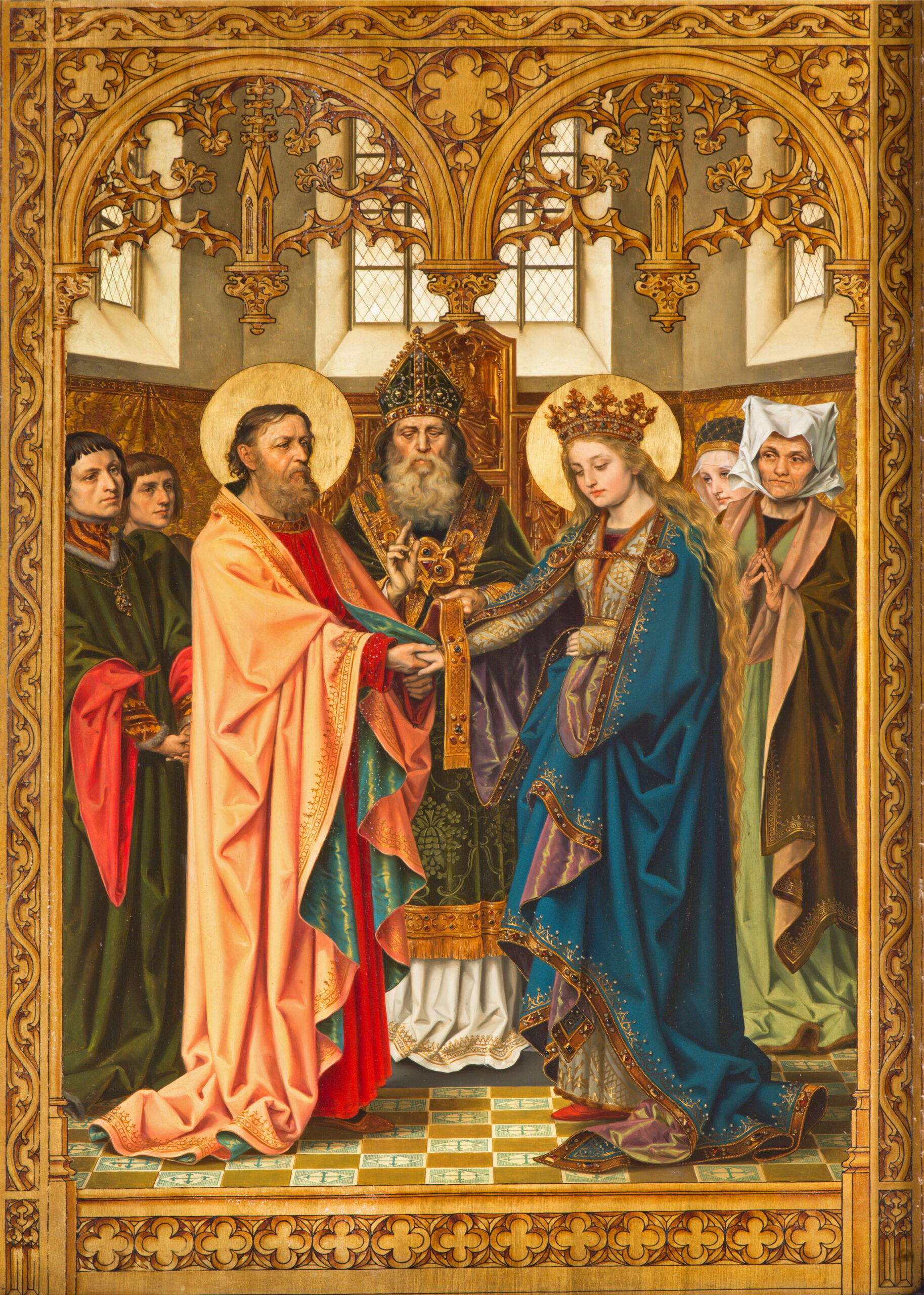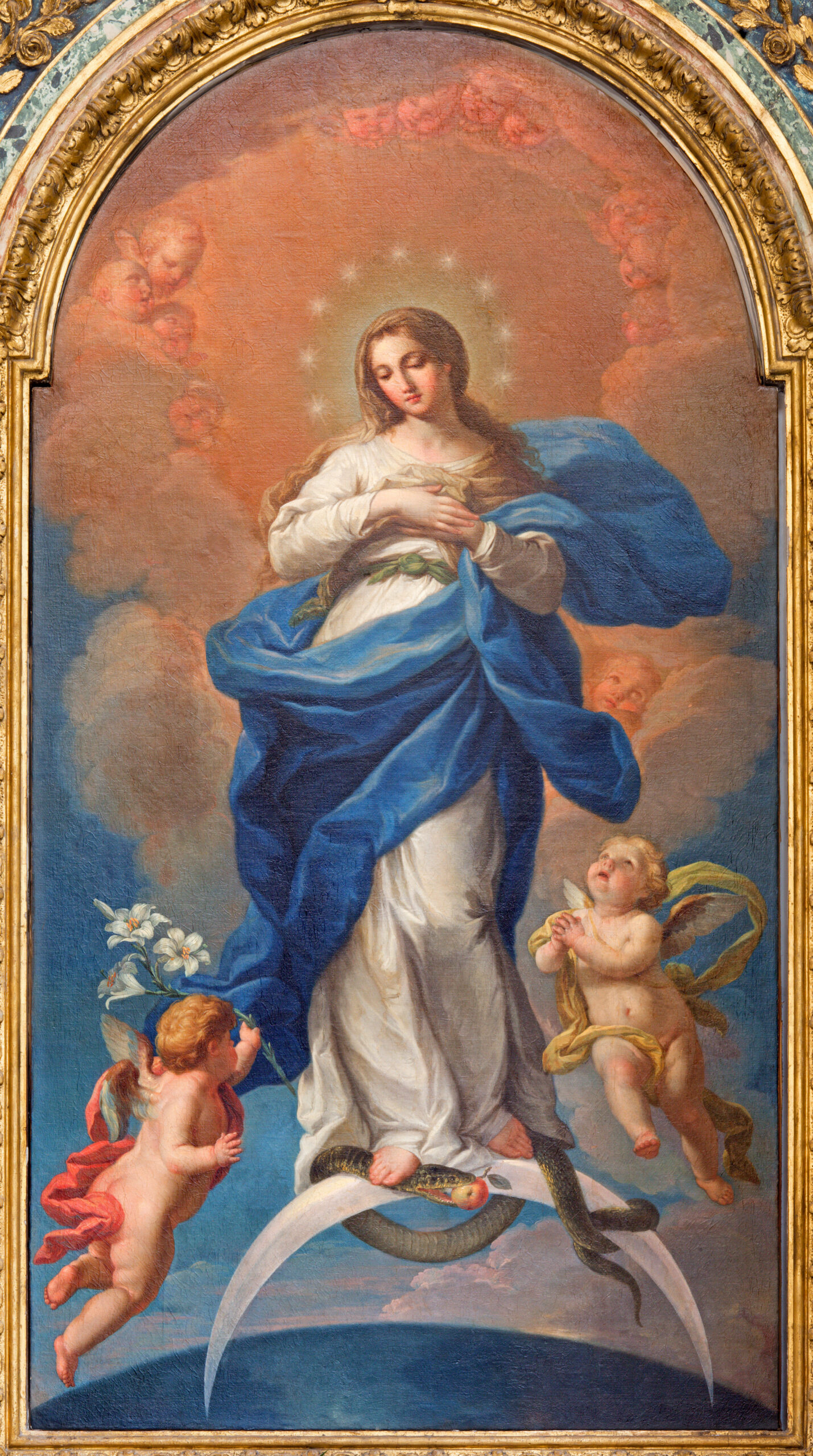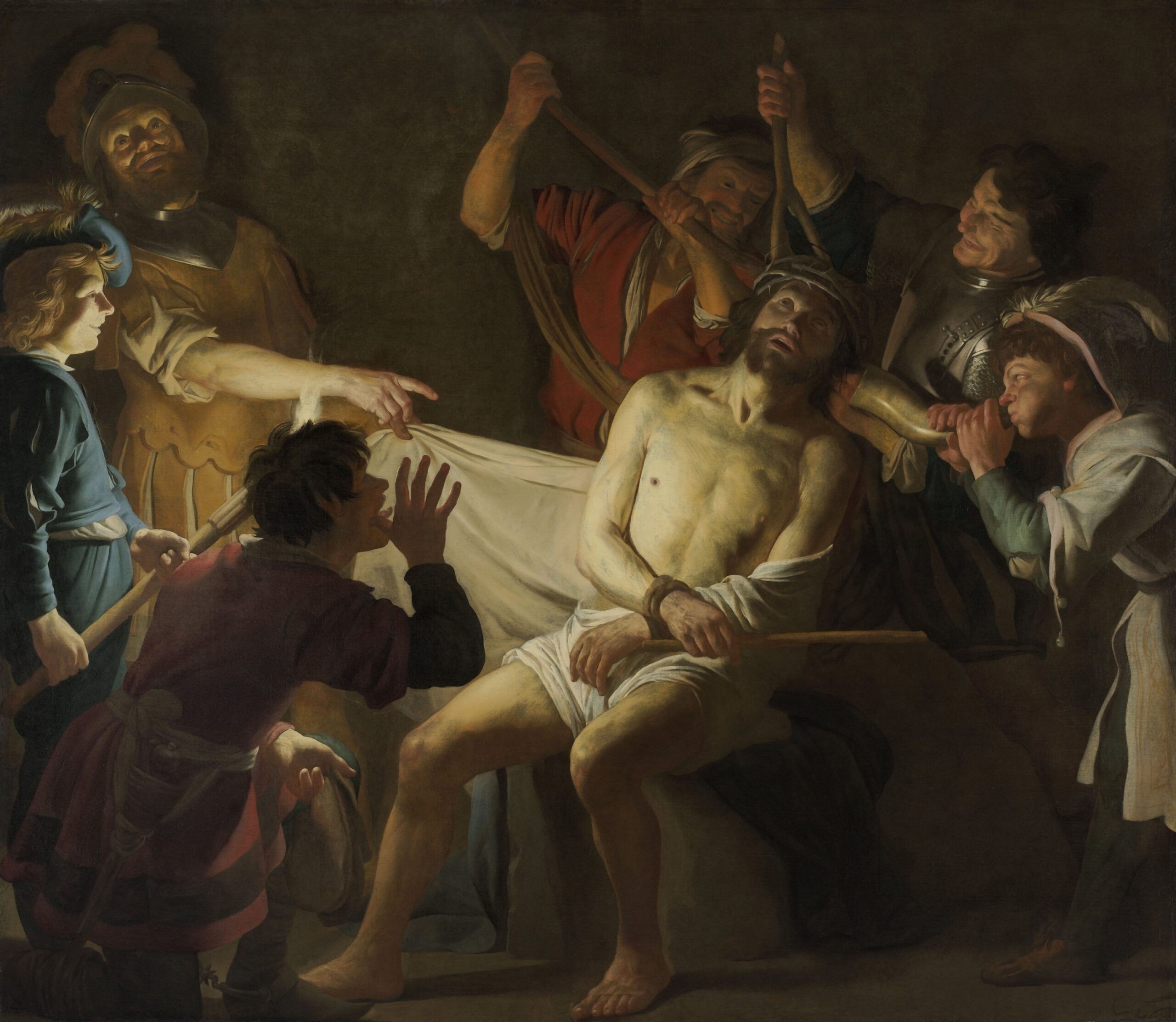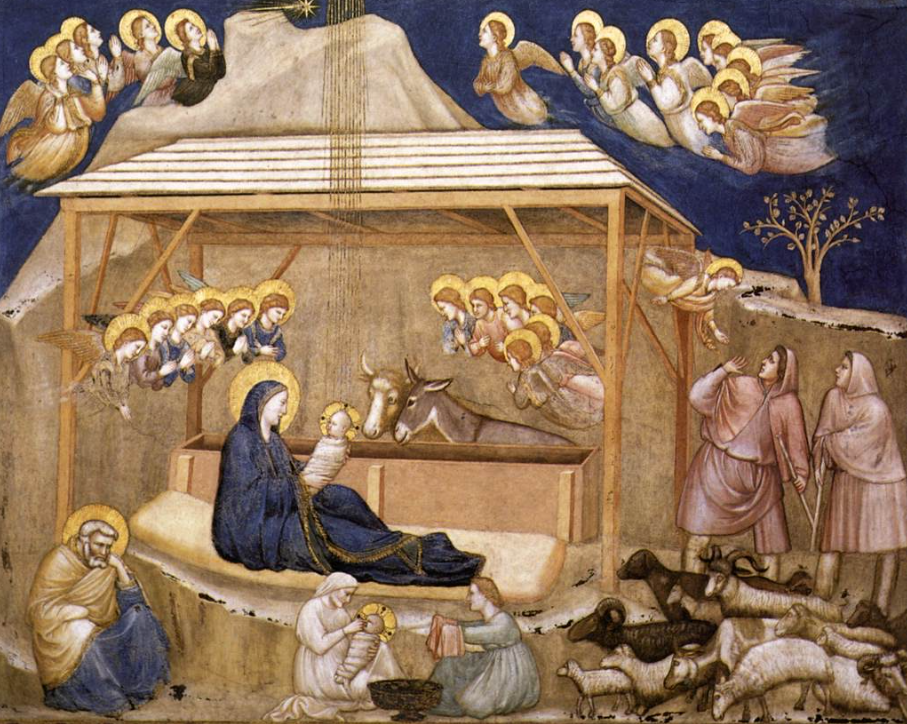“Nothing is more distinctly Catholic than devotion to the Blessed Virgin Mary, and it is largely because of this devotion that Catholics remain deeply convinced of the divinity of Christ, and vividly conscious of His humanity.”
—Msgr. J. D. Conway
Students of Church history know well the devotion expressed to Our Lady from the beginning of the Christian era. One example is the pious belief of the Christian faithful in the Immaculate Conception of the Blessed Virgin, which has passed through the centuries amid the acclamations of generations of lay and clergy alike.
Finally, the saintly Blessed Pope Pius IX defined this dogma as an article of faith in 1854. This came as no surprise to many Catholics in America who already had great devotion to Our Blessed Mother under this venerable title. The attentive reader of US history cannot fail to see the hand of God manifested in a special way in which Mary Immaculate is claimed for America.
America and the Immaculate Conception
When Columbus arrived in the New World, he dedicated it to Our Lady under the title of the Immaculate Conception. Historians note the Mississippi River was originally named after the Immaculate Conception by the intrepid missionary Fr. Marquette, who had placed his voyage under the protection of Our Lady Immaculate, promising that if she granted him the favor of “discovering” the great river, he would give it the name of the Immaculate Conception.
When Alexander O’Reilly came to Louisiana in 1769 as the Spanish governor of that province, he gave for the form of oath which was to be taken by all officials, containing among other things, the following: “I—-, appointed . . . , swear before God, on the holy Cross and the Evangelists, to maintain and defend the mystery of the Immaculate Conception of Our Lady the Virgin Mary.”
American prelates in turn authoritatively promoted devotion to the Immaculate Conception until they obtained from the Holy Father their petition that Our Blessed Lady under the title of the Immaculate Conception should be the patroness of the United States and later that her feast should be a holy day of obligation, something that was confirmed at the Third Council of Baltimore.
Mary as Patroness of the United States
It is noteworthy that Our Lady under this ancient title was not merely chosen as patroness of the Church in the United States but as patroness of the United States. Neither in the decree of the fathers of the Council of Baltimore nor in the document from the Holy See confirming their request is the phrase “of the Church” found. Mary is called “Patroness of the United States.”
In this way, the mantle of Our Lady’s protection in some way covers all who dwell in the great republic of the United States of America. No sooner had the illustrious John Carroll been consecrated bishop in the United States on August 15, 1790 – the Feast of the Assumption of Our Lady – Marian devotion in the US was given renewed impetus. Carroll was the first native-born American bishop.
The new bishop was born and grew up in the United States and had great devotion to our Lady. He helped set the tone for the Catholic missionary expansion across the East Coast. It was decreed under his direction at the first synod held in Baltimore in 1791 that the Litany of the Blessed Virgin Mary, the principle patroness of the vast ecclesiastical province of Baltimore, should be sung or recited before Masses on Sundays and holy days.
In another decree, the bishop ordered that from the beginning of his episcopal ministry, he was most anxious to select the holy Mother of God as the patroness of the Diocese of Baltimore and that through her holy intercession, the faith and piety of the people committed to him might flourish and be increased. He further decreed that the feast of the Assumption of Our Lady should be the principal feast of the diocese, urging both clergy and laity alike to celebrate it with the greatest solemnity.
The Bishops of the United States Speak
Years later at the Sixth Provincial Council held in May of 1846, the bishops of the United States discussed devotion to the Immaculate Conception once again. In the third congregation, held May 13, an auspicious date relating later to the Fatima apparitions, the first decree of the council was promulgated. The decree starts with these memorable words, a testimony to the devotion which had long flourished and how it was to be celebrated every year going forward for Catholics in America to celebrate Mary as their new Patroness with the utmost solemnity.
It read, “The Fathers, with ardent desire, and with unanimous applause and consent, have chosen the Blessed Virgin conceived without original sin as the Patroness of the United States; without, however, imposing the obligation of hearing Mass and resting from servile works on the feast itself of the Conception of the Blessed Mary; and therefore the Sovereign Pontiff shall be humbly petitioned that the solemnization of the feast may be transferred to the following Sunday, – on which day the Masses, both private and solemn, of the feast shall be celebrated, and Vespers of the same feast shall be recited.”
This decree was approved and confirmed by the Holy See on February 7, 1847. In his letter to the then archbishop of Baltimore on July 3 of that year, Cardinal Fransoni, the prefect of the Sacred Congregation for the Propagation of the Faith, announced the decision and enclosed the decree, remarking that the Holy Father had most willingly confirmed the recommendation of the council.
Further, as a sign of the ardent devotion of American Catholics to Our Lady, in the fourth private congregation of the same council, held May 15, it was decreed that the Holy See should be petitioned for the privilege of adding the word “Immaculate” before the word “Conception” in the Office of the Conception of the Blessed Virgin Mary found in the Roman Breviary and also in the prayers and Preface of the Mass of the same feast. This same petition was to include the invocation “Queen conceived without original sin, pray for us,” to the Litany of Our Lady. The Holy Father granted these petitions in perpetuity on September 13, 1846.
Mob Violence and Recourse to Our Lady
There is an interesting story connected with the title of Mary Conceived Without Sin as the patroness of the United States during a time of mob violence against the Church in the state of Ohio. It was given by the celebrated missionary Fr. De Smet, S.J., indicating recourse to the Immaculate Conception in order to quell the violence. In a letter to an editor of the Precis Historiques in Brussels, dated New York, May 16, 1857, he wrote on the life and labors of the Rev. Theodore de Theux, saying,
In 1844 the Bishop of Cincinnati found himself frequently menaced, as well as the Catholics of his diocese, by tumultuous mobs, composed of the enemies of our holy faith. He asked counsel of Father de Theux. After some moments of reflection the father answered that he should obtain peace and security in those difficult times if he would have recourse to the Sovereign Pontiff, and would encourage the other bishops of the United States to follow his example, so as to obtain the favor of adding, in the Preface of the Mass, to the word “Conception” the prefix “Immaculate.” The worthy bishop received the advice with respect, and the request was soon after made at Rome and crowned with success.
In short, the council saw fit to include this change as an invocation against mob violence. While the acts of the council do not state by whom this question was introduced, nevertheless, this being the first provincial council after the bishop of Cincinnati had spoken of it to Fr. De Theux, it may be safely presumed that it was brought up at the insistence of the ordinary of that see.
There is a further interesting connection. When Pius IX was in exile at Gaeta, it is said he commenced the preliminaries for the definition of the dogma of the Immaculate Conception. Then, too, he was hiding from mob violence, which had even reached Rome and the Vatican, putting the life of the Holy Father at risk.
Clearly, Pius IX saw Our Lady under this specific title as a refuge for the times. He established a special congregation to take the matter into consideration. He decided to consult the bishops of the entire world. He addressed a circular letter to them asking the bishops to lend their aid and cooperation to ascertain the devotion and test the waters of the clergy and Christian faithful in regard to their devotion to this mystery.
In reply, the fathers of the Seventh Provincial Council of Baltimore, which was held in May of 1849, declared in their first decree that the clergy and faithful of the United States were already animated with a most ardent devotion to the Immaculate Conception; in the second decree, they expressed, with but one dissenting voice, the joy they would feel at its definition as an article of faith if the Holy Father should deem such a definition opportune.
The Definition of the Immaculate Conception as an Article of Faith
The Blessed Mother had already been chosen as patroness of our country and the US bishops had expressed their opinion regarding the definition as an article of faith. All that was left was to await the definition by the Vicar of Christ. It was then the American prelates expressed a wish that the bishops of the United States would labor to have the feast of the Immaculate Conception added to the list of other holy days of obligation in the United States.
The American Civil War, which was unhappily waging in 1862, prevented the assembling of the Second Plenary Council at a proper time. It was therefore postponed until October of 1866, when it was deemed expedient for the Fathers to meet. In the tenth private congregation of this council, which was held on October 19, the question of raising the feast of the Immaculate Conception to the dignity of a holy day of obligation throughout the union was discussed by the prelates.
The decision was decreed, with five votes in the negative. Finally, the decree was approved by Blessed Pius IX, who had labored so strenuously and successfully during his long pontificate in promoting the honor of the Immaculate Mother of God. The Catholics of our day in the United States should deem it a special privilege to have such a feast, devotion, and patroness in heaven of whom America is historically a precious jewel in her crown.
